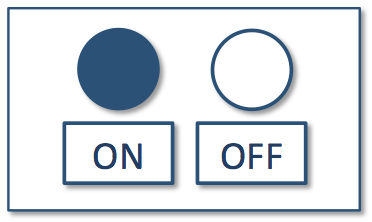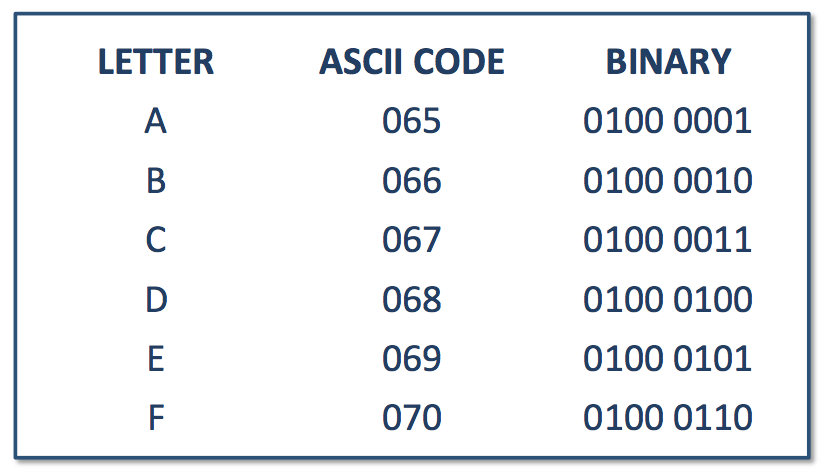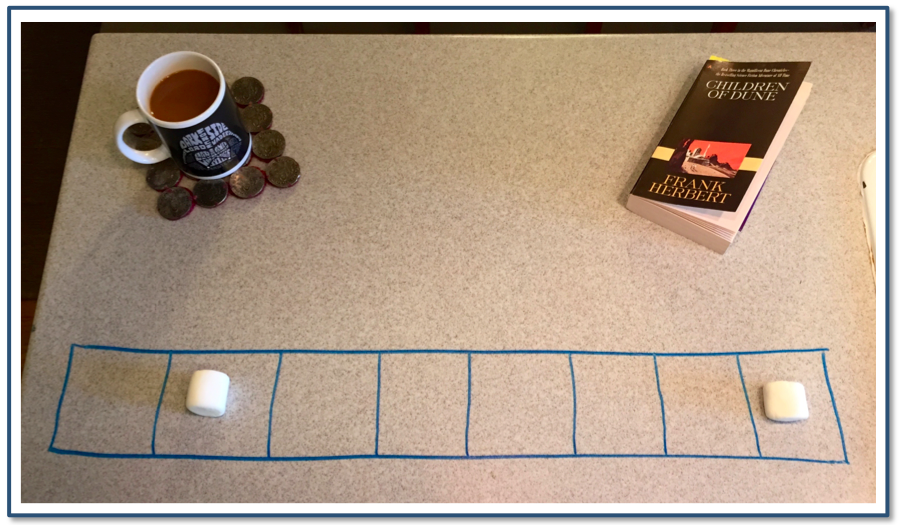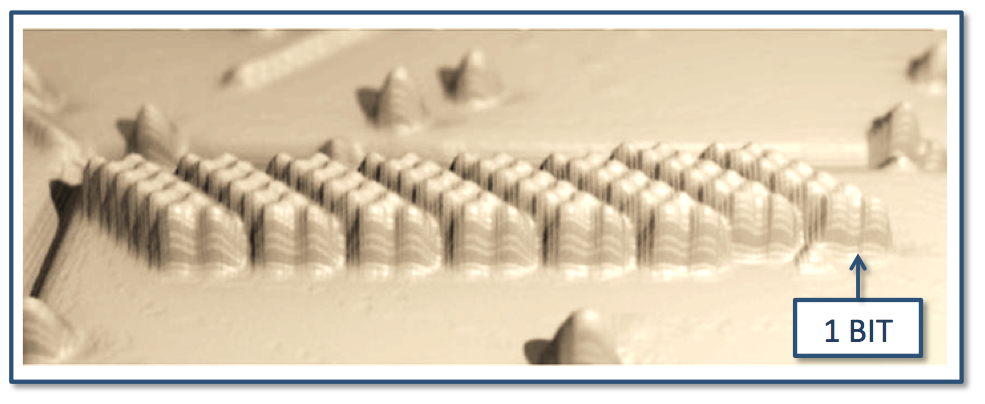A bit is a single quantum of information. It denotes presence or absence. On or off. When we speak of the digital, we speak of a system in which everything is reducible to bits—to ones and zeros.
By convention, digital systems represent data in eight-bit sets, or bytes, each corresponding to a binary number. A binary number represents a value using only ones and zeros.
In the 8-bit system, an uppercase A corresponds to the binary number 65: 0100 0001. To demonstrate, below, I’ve represented an A using marshmallows. Essentially, I’ve stored an A on my kitchen counter.
A few years ago, IBM researchers were able to store a byte of information at a much smaller scale—using Iron atoms. Below is an actual image of the atoms produced by a scanning tunneling microscope.
Each set of twelve atoms represents a bit. The bits form a byte, enough to store a single letter. An A no bigger than few billionths of a meter long. At this scale, War and Peace written out in a single line would be about 1.7 cm in length, less than 5/8 of an inch.
An infinitesimal thread.
//On Smallness_1//




